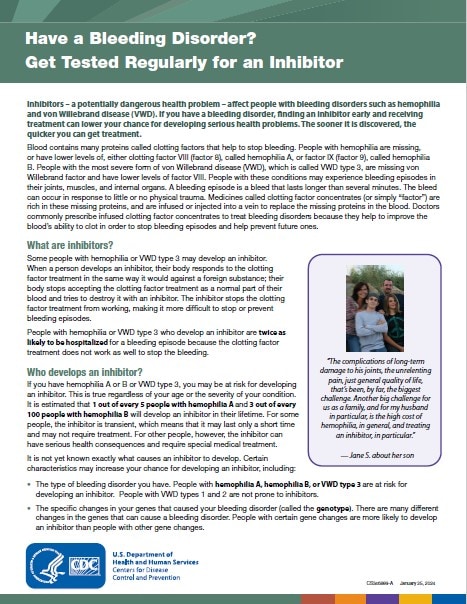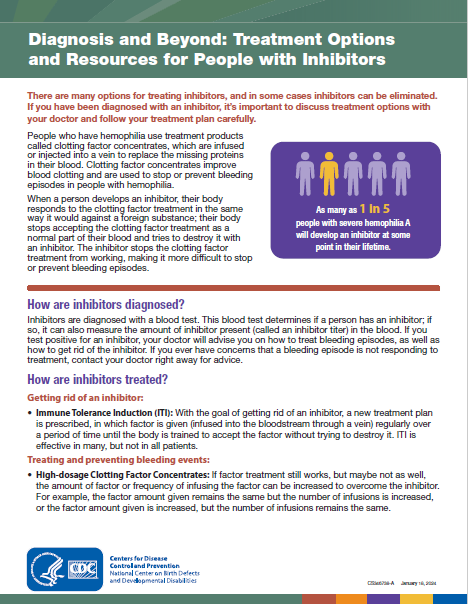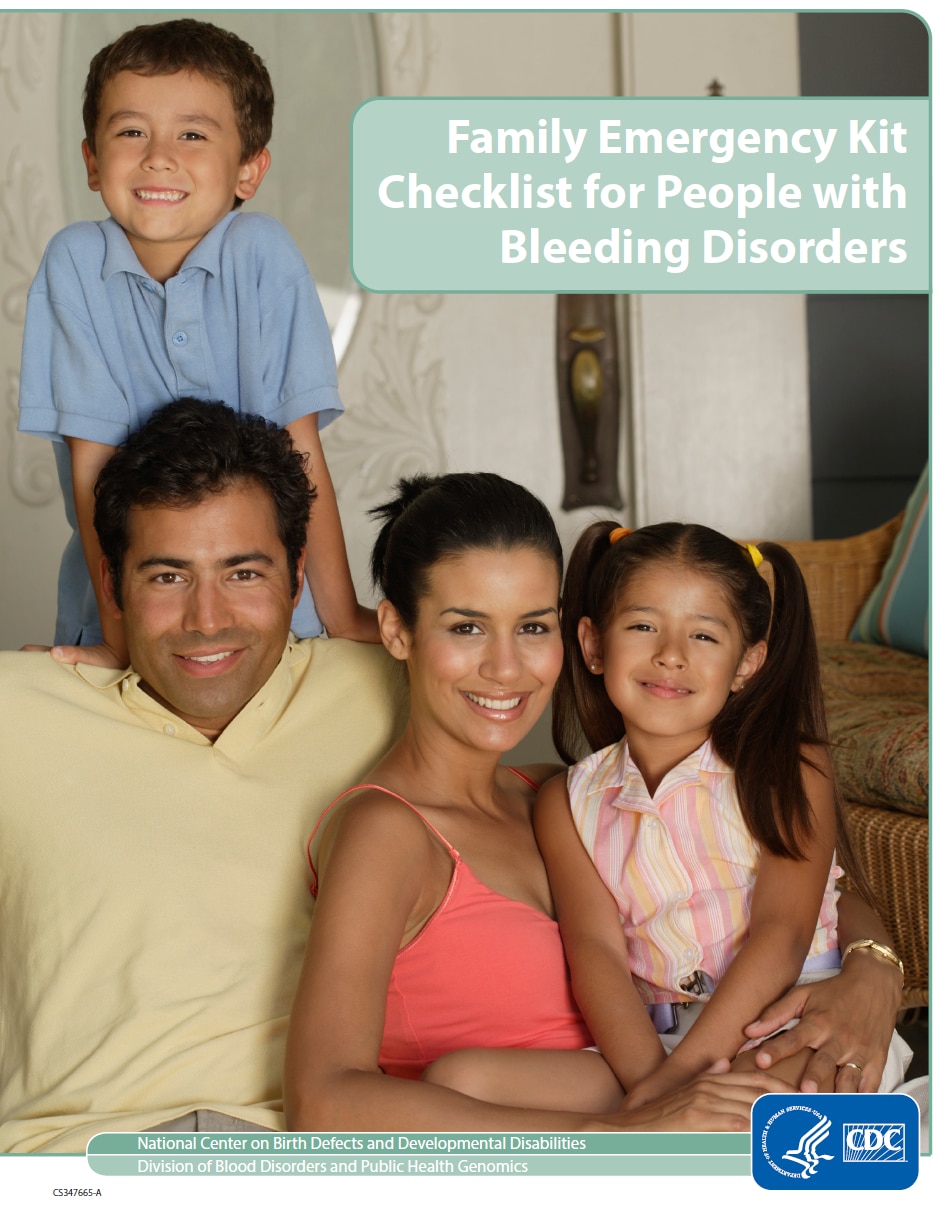At a glance
Learn more about hemophilia with these printable resources.

Get tested regularly for an inhibitor

Have a Bleeding Disorder? Get tested regularly for an inhibitor: This fact sheet talks about inhibitors, a potentially dangerous health problem that affect people with bleeding disorders.
Treatment options and resources for inhibitors

Diagnosis and Beyond: Treatment Options and Resources for People with Inhibitors [English]: This fact sheet contains information about treatment options for inhibitors and provides resources for people who have been diagnosed with an inhibitor or would like to learn more on the subject.
Family emergency kit checklist

Family Emergency Kit Checklist: It is important to develop an emergency plan before disaster strikes. It is especially important for people with bleeding disorders to have a plan in place in order to ensure that the same level of care is maintained in the event of a disaster.
